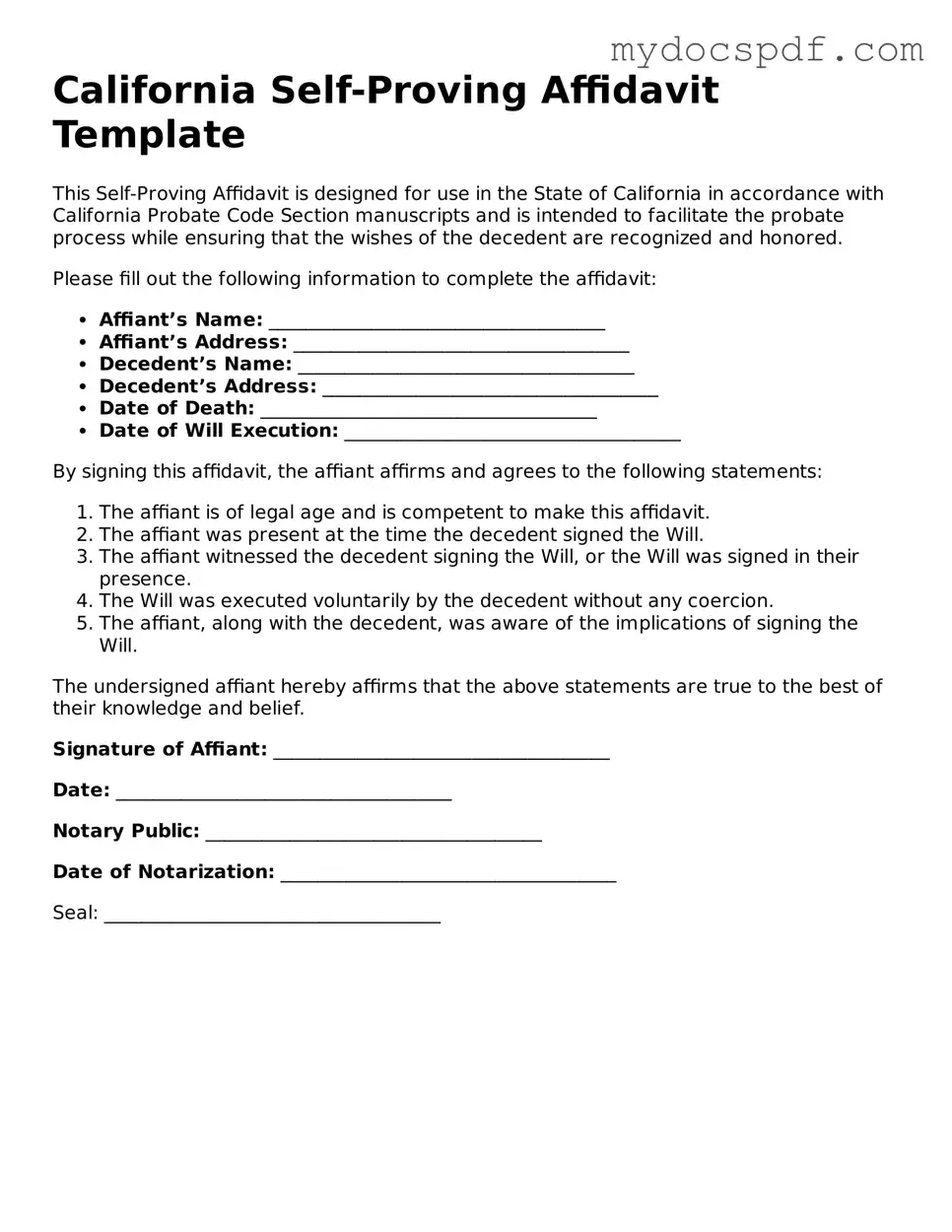California Self-Proving Affidavit Template
This Self-Proving Affidavit is designed for use in the State of California in accordance with California Probate Code Section manuscripts and is intended to facilitate the probate process while ensuring that the wishes of the decedent are recognized and honored.
Please fill out the following information to complete the affidavit:
- Affiant’s Name: ____________________________________
- Affiant’s Address: ____________________________________
- Decedent’s Name: ____________________________________
- Decedent’s Address: ____________________________________
- Date of Death: ____________________________________
- Date of Will Execution: ____________________________________
By signing this affidavit, the affiant affirms and agrees to the following statements:
- The affiant is of legal age and is competent to make this affidavit.
- The affiant was present at the time the decedent signed the Will.
- The affiant witnessed the decedent signing the Will, or the Will was signed in their presence.
- The Will was executed voluntarily by the decedent without any coercion.
- The affiant, along with the decedent, was aware of the implications of signing the Will.
The undersigned affiant hereby affirms that the above statements are true to the best of their knowledge and belief.
Signature of Affiant: ____________________________________
Date: ____________________________________
Notary Public: ____________________________________
Date of Notarization: ____________________________________
Seal: ____________________________________
